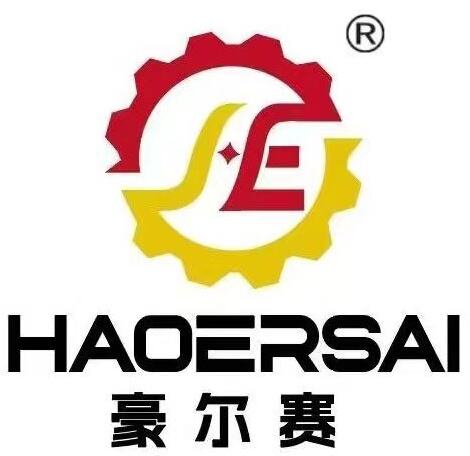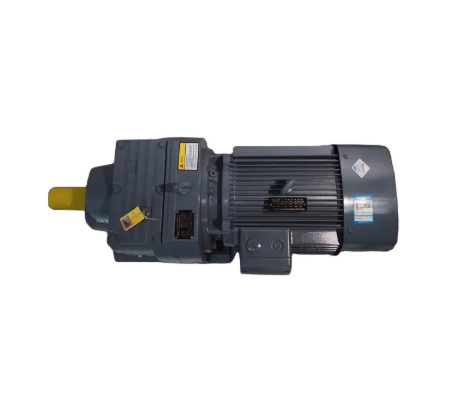Core Components of a Gear Motor
Electric Motor: The Power Source
Electric motors serve as the main driving force behind gear motors, taking electrical energy and turning it into mechanical movement that actually does work. There are several different kinds of these motors available on the market today, including both AC and DC variants, and each type impacts how well the gear motor performs and what kind of jobs it can handle effectively. Take AC motors for instance they tend to be built tougher and work better in bigger industrial settings where there's lots of power needed. On the flip side, DC motors give much finer control over motion which makes them ideal for smaller gadgets and equipment where precision matters most. How efficient an electric motor runs and how much power it delivers really counts because this determines whether the whole gear motor system will perform adequately across all sorts of applications from factory automation to consumer electronics.
Gear Train: Torque Conversion Mechanism
Gear trains play a key role in gear motors by transforming the motor's spinning motion into much greater torque, something needed across countless applications that demand strong force without high speed. When engineers tweak how gears are arranged, whether they go with standard spur gears or angled helical designs, they get better performance out of the system based on what exactly the application needs. Getting a handle on gear ratios matters quite a bit when trying to hit target torque levels without wasting energy. This lets manufacturers adjust both speed and power output precisely, which makes all the difference in everything from factory machinery to household appliances where exact specifications are required for proper operation.
How Gear Motors Convert Energy
Electromagnetic Energy to Rotational Force
Gear motors work when they turn electromagnetic energy into spinning motion thanks to how their magnetic fields interact. The whole energy conversion thing starts with how the stator and rotor are built, and these parts really matter for how good the motor runs. When everything works together just right inside those components, the motor performs much better. Things like how coils are wound around the motor, how strong the magnets are, and what kind of material makes up the core all play big roles in how much torque the motor can produce and how quickly it responds. Take strong magnets combined with carefully wound coils for example. This setup helps the motor generate that spinning power more efficiently, which is why so many different machines rely on this technology for their operation.
Speed-Torque Relationship Through Gear Reduction
Getting a handle on gear reduction matters a lot when it comes to balancing speed against torque in gear motors. When we adjust gear ratios, what happens is we get more torque but slower movement, which works better for certain jobs. The basic idea from physics is simple enough torque goes up when speed drops down, something that's really important if we want to keep things running smoothly under load. Picking the right gear ratio basically boils down to what kind of speed and power combination we need. For stuff like robots or automation equipment, this balance becomes critical because these machines require both accuracy and sufficient power to function properly without wasting energy.
Types of Gear Motor Configurations
Parallel Shaft vs Right-Angle Designs
Choosing the right gear motor configuration makes all the difference in how well an application performs. Parallel shaft models stand out because they take up less room while still running efficiently, which explains why many engineers go this route for straight line setups. These motors typically feature either spur gears, helical gears, or those fancy double helical ones that let them run pretty quiet even when pushing hard. Right angle designs have their own advantages though, especially in tight spots where there just isn't enough room to mount equipment straight ahead. The way these motors bend at 90 degrees gives installers much more flexibility to fit everything into whatever cramped machinery cabinet or industrial enclosure they're working with. Most folks end up picking based on three main things: how much space they actually have, what kind of power they need from the motor, and exactly what the machine needs to do day to day. Take conveyor systems in food processing plants for example. When floor space is at a premium, right angle motors become almost essential for getting everything installed properly without tearing apart existing infrastructure.
Planetary vs Worm Gear Systems
When deciding between planetary and worm gear systems, engineers need to look closely at what their particular application demands. Planetary gears stand out because they pack a lot of torque into small spaces, which makes them reliable and accurate for things like robotics or heavy machinery where space is tight but power matters. These systems work with three main parts: a central sun gear, several planet gears orbiting around it, and an outer ring gear that keeps everything spinning smoothly together. Worm gears tell a different story though. They have this neat self-locking feature that stops things from moving backward when power isn't applied, so they're great for cranes or elevators where safety against unintended motion is critical. With worm drives, there's basically just a screw meshing against a gear wheel, and this setup naturally reduces speed while keeping things simple mechanically. Picking the right one really comes down to understanding how much weight needs to be moved, how fast it needs to go, and whether there's room for bigger components. Many designers make the mistake of choosing based only on cost without considering these factors, which can lead to serious problems later on.
Key Advantages of Gear Motor Technology
High Torque Output at Controlled Speeds
Gear motors deliver high torque output without sacrificing speed control, something really important for precision work. They've become essential equipment across manufacturing floors and industrial automation setups where getting things right matters for both productivity gains and operational efficiency. Industry professionals note these motors generate way more torque than what comes straight from the motor itself, sometimes boosting it as much as 100 fold compared to base output. The extra torque makes all the difference when dealing with heavy loads at slow speeds, helping everything run smoother on factory lines, assembly plants, and other mechanical systems that need reliable power transmission.
Energy Efficiency in Power Transmission
Gear motors are pretty efficient when it comes to energy use, typically beating out many other power transmission options with efficiency rates above 90% in most industrial settings. The real advantage here is twofold: these motors cut down on running expenses while also lasting longer than their counterparts, which makes them smart investments for facility managers. Industry research shows companies switching to gear motor tech see real money saved on both electricity bills and repair work over time. What's more, since they waste less energy converting power from one form to another, gear motors help reduce overall consumption without sacrificing performance, something manufacturers care about as energy prices keep climbing.
Compact Design for Space-Constrained Applications
Gear motors come in small packages that make them perfect for tight spaces where bigger alternatives just won't fit. This compact nature lets engineers create all sorts of interesting products without sacrificing functionality. Take robots for instance many manufacturers rely heavily on these tiny powerhouses to pack more features into their designs while keeping everything light weight. When there's not much room to work with, having a motor that fits right in makes all the difference. That's why we see so many innovations coming from industries like consumer gadgets and automated manufacturing lines, where every millimeter counts but performance can't suffer.
Practical Applications of Gear Motors
Industrial Automation Systems
Gear motors play a key role in making industrial automation systems work better, driving everything from conveyor belts to those fancy robotic arms we see on factory floors. When manufacturers install these motors, they generally find their production lines become more scalable and dependable over time. What makes gear motors so valuable? They boost operational efficiency plain and simple something every business needs if they want to keep up in today's tough global marketplace. According to industry reports, factories that switch to automation with gear motor tech typically save money while getting products out faster. This gives them a real edge when competing with overseas manufacturers who might be trying to undercut prices.
Robotics and Precision Machinery
Gear motors play a vital role in robotics when it comes to getting those precise movements right. When these motors work at top performance levels, they let robots handle complicated tasks over and over again without mistakes something that matters a lot in situations where accuracy counts. Most people working in the field will tell anyone who asks that better gear motor tech has really pushed forward how good modern robots are today. These improvements mean machines can do all sorts of detailed work with just the right amount of force and movement, making them indispensable for jobs like assembly line work or medical procedures where even small errors matter big time.
Automotive Power Accessories
Gear motors play a big role across many parts of cars today. They power things like windows, seats that move around, and those little lift mechanisms in trunks. When it comes down to it, how well these motors work really affects what drivers feel when they're inside their vehicles. As more manufacturers push forward with electric models, the need for better gear motor tech has never been greater. Electric vehicles require completely different approaches compared to traditional combustion engines, so engineers are constantly looking at ways to improve motor efficiency while still keeping costs reasonable. Right now, most companies are focused on developing smaller but stronger motor systems that can handle all sorts of complex functions without taking up too much space under the hood.
FAQ
What are the different types of electric motors used in gear motors?
Electric motors used in gear motors typically include AC and DC motors, each offering different benefits such as robustness for larger applications in AC motors or precision control in DC motors.
How do gear trains affect the performance of gear motors?
Gear trains convert the motor's rotational speed into higher torque, crucial for applications requiring force at low speeds. Different configurations like spur or helical gears can optimize performance based on application needs.
Why are gear motors an essential component in industrial automation systems?
Gear motors enhance the efficiency, scalability, and reliability of industrial automation systems by driving components like conveyor belts and robotic arms, essential for competitive and cost-effective operations.
How do planetary and worm gear systems differ?
Planetary gear systems provide high torque and precision in compact designs, while worm gear systems offer self-locking capabilities and significant speed reduction without risking back-driving, favoring different application requirements.

